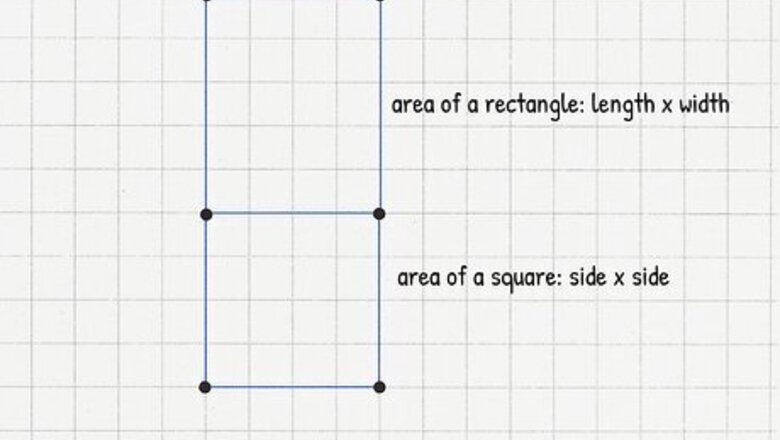
views
Breaking Down the Irregular Shape
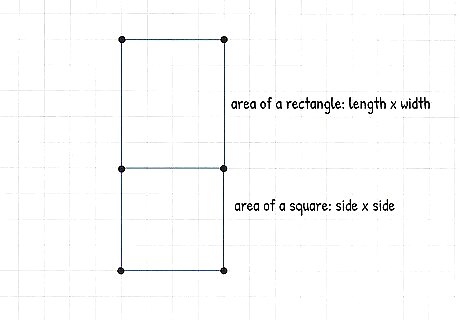
Find and add the areas of the composite shapes to find the total area. Break the irregular shape down into smaller ones like squares, rectangles, and triangles. Mathematicians have specific formulas for finding the areas of these shapes, so it's easier to find the area of the irregular shape if we can separate it into its composite parts. A composite is an object made up of smaller parts (kind of like a finished puzzle is a composite of many different puzzle pieces). For example, the image above is made of 2 different shapes — a rectangle and a square — combined. To find the area, all we have to do is calculate the area of the rectangle and the area of the square and then add those two numbers together. Below are the formulas for finding the area of common regular shapes. Area of a square: Side x side Area of a rectangle: Length x width Area of a triangle: Base x height / 2
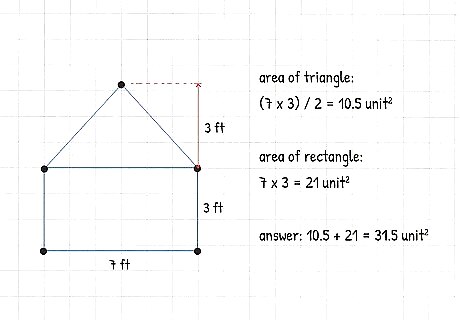
Example: Find the area of the irregular pentagon. In this problem, we have a five-sided shape (called a pentagon) that's irregular. We know it's irregular because not all its sides and angles are equal. Find the solution by breaking it down into its composite parts: 1 triangle at the top and 1 rectangle on the bottom. Next, calculate the area of those parts expressed in square units and add them together using these formulas. Area of triangle: (7 x 3) / 2 = 10.5 square units Area of rectangle: 7 x 3 = 21 square units Answer: 10.5 + 21 = 31.5 square units (area of irregular pentagon)
Using a Square Grid
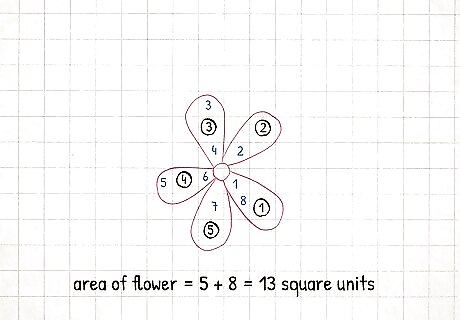
Draw the irregular shape on graph paper and count the squares inside it. Trace the outline of the irregular shape on a piece of graph paper with a pencil, a pen, or a marker. Next, count the number of squares inside it by filling them in with a different color than what you used to draw the outline. The area is equal to the number of squares that are fully inside the shape plus the number of squares that are halfway or more inside the shape. For example, if you want to find the area of a 2D flower, and you count 5 squares fully inside the flower and 8 squares that are halfway or more inside of it, add the two numbers together to get the final total area: 13 square units. If a square is less than half inside the irregular shape on the grid, count that shape as 0 when adding up the area.
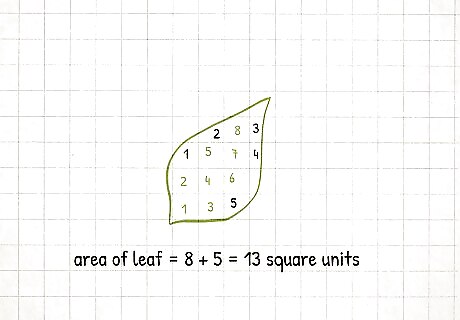
Example: Find the area of the leaf shape. In this problem, we have a 2D leaf with an elongated teardrop shape. Tracing this image onto a sheet of graph paper is the best way to find the area since you can't break it down into composite parts that are easier to measure. After tracing it onto graph paper, color in the squares inside the leaf and then count them to estimate its area. As you can see, only 8 squares are fully colored in, 5 are half or more than halfway filled, and the rest are less than halfway filled. You only need to count the ones that are full, halfway, or more than half colored in. Answer: 8 + 5 = 13 square units (area of leaf)
What is the area of an irregular shape?
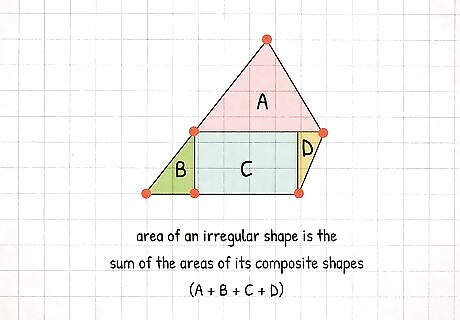
The area of an irregular shape is the sum of the areas of its composite shapes. According to math tutor David Jia, "area is essentially the amount of two-dimensional space that a shape takes up." To calculate the area of an irregular shape, break it down into smaller, more basic shapes, find each shape's area, and then add all the areas together. Another way to find the total area is by drawing the shape on a piece of graph paper and counting the number of grid squares inside it. What is an irregular shape? An irregular shape doesn't have all equal sides or equal angles. Examples are scalene triangles (where all 3 sides are different lengths), a right triangle, an isosceles triangle (where 2 sides are the same length), and a rectangle. An irregular shape can also be a combination of regular and irregular shapes, as well as a more complex design with curves (like a flower or a leaf). What is a regular shape? In a regular shape, all sides and angles are equal to each other. Examples are squares, equilateral triangles, and regular pentagons. All of these shapes have a different number of sides, but all their sides are of equal length.
How to Find the Perimeter of Irregular Shapes
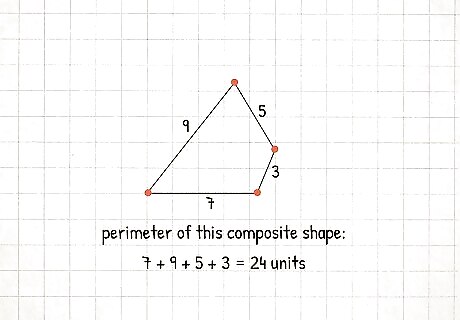
Add the length of each side of a composite shape to find the perimeter. Find the length of each side of the shape, then add those numbers together to find the perimeter. You can also trace the shape onto a piece of graph paper, count the number of square sides on the outline of the shape, and then add the totals. For example, the above shape has 4 sides measuring 7, 9, 5, and 3. To get the perimeter, simply calculate 7 + 9 + 5 + 3 = 24.
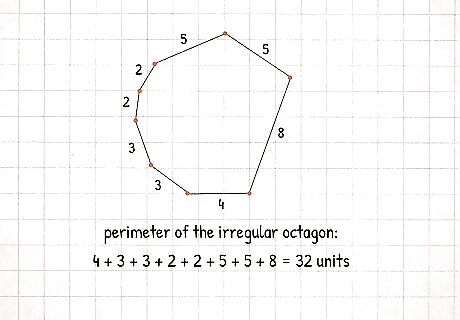
Example: Find the perimeter of the irregular octagon. In this problem, we see an irregular shape with 8 sides total. Some but not all of the sides are the same length as each other. To calculate the perimeter, add the length of each side together. Answer: 4 + 3 + 3 + 2 + 2 + 5 + 5 + 8 = 32 units
Frequently Asked Questions (FAQs)
What is an irregular shape? An irregular shape is a shape that doesn't have equal sides or equal angles all the way around.
How do you find the area of an irregular shape using a grid? Count the number of squares that are fully, halfway, or more than halfway inside the irregular shape. The total is the area.
Is there a formula for calculating the area of an irregular shape? There is no single formula for calculating the area of an irregular shape. The main method is to break the irregular shape into its composite shapes, find their areas, and add them together to reach a total area. The other method is to draw the irregular shape on a square grid (like graph paper) and count the number of full or half-filled squares inside it.











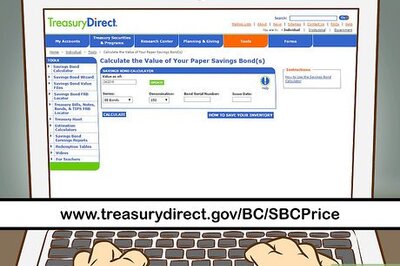







Comments
0 comment